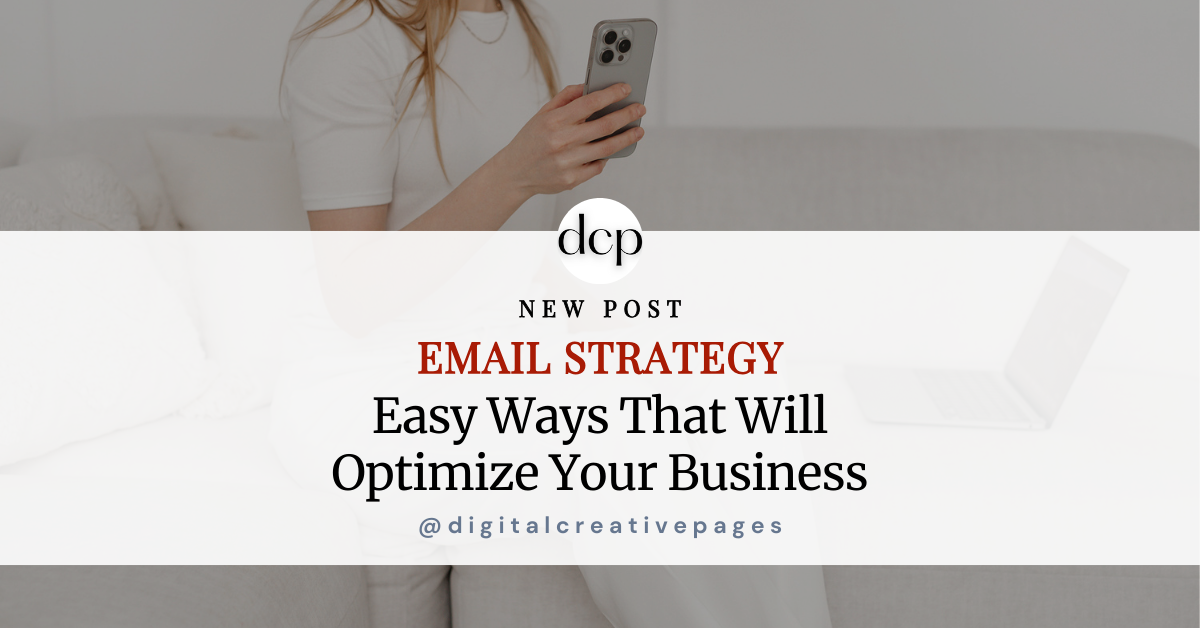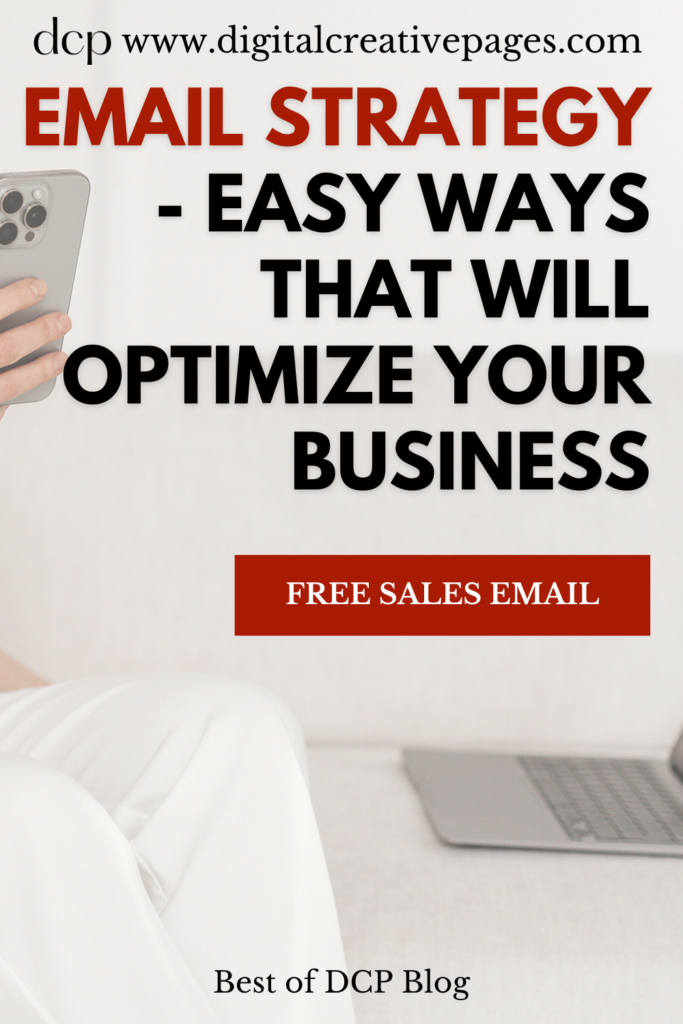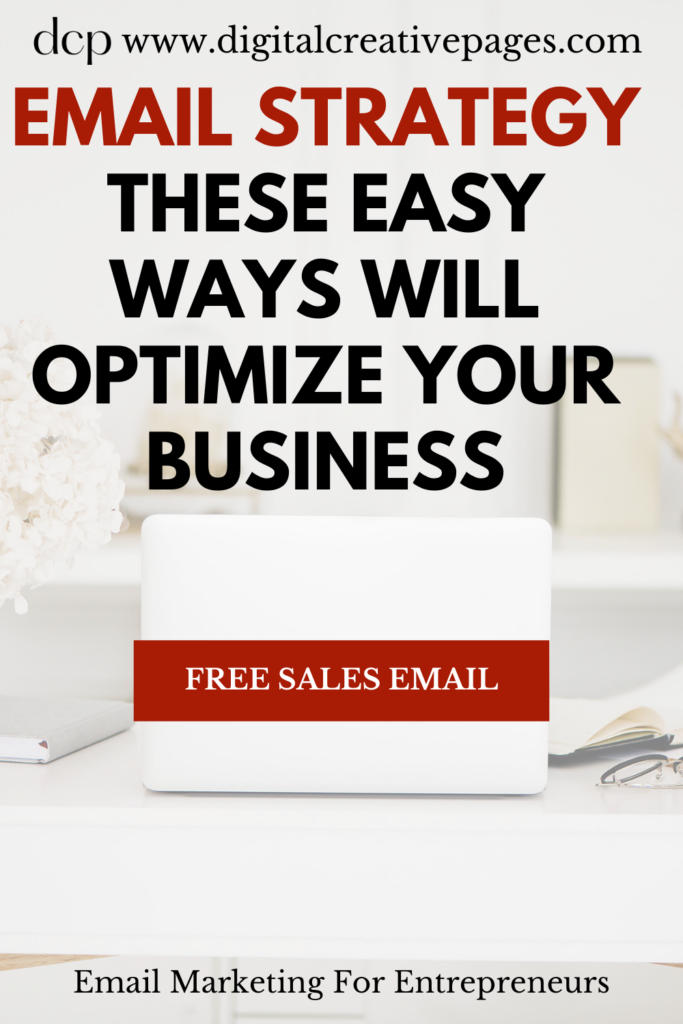Introduction
If you’ve already wrapped your head around how email marketing can seriously boost your business, you’re halfway there. But what about the tech part—how do you actually set it up, and when should you be sending those emails? This is the email strategy in business.
This post is your practical roadmap: we’re diving into the best platforms, no-website-required list-building tricks, and the timing strategies that get emails opened. No fluff, no overwhelm—just clear steps to make email work for you.
Pin this for later
Which Email Marketing Service is the Best?
Choosing the right email marketing service can feel like trying to pick the perfect avocado at the grocery store – it’s not always easy to tell what’s inside! But don’t worry, I’ve got you covered.
Here’s a rundown of some popular options, along with their strengths:
1. Mailchimp
This is often the go-to for beginners, and for good reason. It offers a user-friendly interface that makes it easy to create attractive emails even if you’re not a design whiz. Plus, their free plan is quite generous, allowing you to have up to 2,000 subscribers and send up to 10,000 emails per month. This makes it a great option if you’re just starting out and want to test the waters without committing financially.
However, as your list grows, you might find that Mailchimp’s pricing can increase quite steeply. Also, while it’s great for beginners, some users find it lacks some of the advanced features they need as their email marketing efforts become more sophisticated.
2. Kit previously known as ConvertKit
Kit is a dream for content creators and bloggers, particularly if you’re focused on building relationships with your audience. The platform’s advanced automation features are a major plus – you can easily set up funnels that guide your subscribers on a journey without needing to be a tech expert. It also offers tagging options, which lets you segment your audience based on behavior, like who clicks on which links in your emails.
If you’re selling products or offering services, Kit allows you to create quick landing pages and forms for lead generation, even if you don’t have a full website set up yet. However, Kit doesn’t have the prettiest email templates, and it may lack some visual customization options. But if functionality and automation are your priority, this is a strong contender.
Now, Kit offers the Newsletter Plan for emerging entrepreneurs that is free for 10k subscribers, with some minimal conditions. This is worth looking into. This is what I have subscribed to.
3. Constant Contact
Constant Contact is like the reliable friend who’s always there to lend a hand. It’s known for its top-tier customer support – so if you’re someone who needs a little extra guidance or prefers talking things through with a real person, this service has your back. The drag-and-drop editor is super easy to use, and the email templates are solid, which makes it easy to create professional-looking emails in no time.
They also offer event management tools, which is helpful if you’re hosting webinars or online events. The downside? It’s on the pricier side compared to some other platforms, and the automation tools aren’t as robust as something like ConvertKit or ActiveCampaign. But if you’re looking for simplicity and strong support, Constant Contact is worth considering.
4. Brevo previously known as Sendinblue
Brevo is like the budget-friendly workhorse of the email marketing world. They offer a great mix of email marketing and automation features, plus SMS marketing – yep, you can reach your audience via text messages too! Their pricing is competitive, and they offer a free plan that’s generous enough to get you started. The standout feature here is their powerful automation capabilities – you can build some pretty intricate workflows that make your email marketing feel seamless.
Another big bonus? Brevo offers transactional emails, so if you have an eCommerce business or sell digital products, you can send order confirmations, shipping updates, and more – all in one place. The trade-off? The email templates are functional but not flashy, so if design is important to you, you might find yourself limited here.
5. ActiveCampaign
If you’re serious about email marketing and want advanced features, ActiveCampaign is where it’s at. Think of it as the full-package – not only does it offer top-notch email marketing tools, but it also includes powerful CRM (customer relationship management) features. This means you can track every interaction with your subscribers and tailor your emails based on their behavior. It’s like having a supercharged engine driving your marketing efforts.
Their automation game is unmatched. You can set up detailed workflows that will send targeted emails based on specific triggers like someone visiting your website, clicking on certain links, or completing a purchase. The downside? ActiveCampaign has a steeper learning curve compared to the others, and it’s a bit pricier, but for businesses looking to scale and seriously invest in email marketing, it’s worth the investment
The “best” service depends on your specific needs, budget, and technical expertise.
It’s a good idea to take advantage of the free trials that most services offer. Test the waters, see which interface you like best, and figure out which one aligns with your goals. Everyone’s email marketing needs are different – so the best fit is the one that helps you achieve your goals with the least headaches!
Pin this for later
Can Email Marketing Be Done Without a Website?
Here’s a fun fact: you absolutely can do email marketing without a website! While having a website can certainly help, it’s not a deal-breaker. Think of it like cooking – sure, having a full kitchen is nice, but sometimes, all you need is a microwave and a little creativity.
Here’s how you can build an email list without a website:
1. Social Media
Leverage the power of your social media profiles. You can promote your email list right there in your bio or through posts, Stories, and even DMs. Instagram, Facebook, or LinkedIn – whichever platform your audience lives on, direct them to your sign-up form!
2. In-Person Events
If you attend or host trade shows, conferences, or even small local events, this is prime time to collect email addresses. A simple clipboard or a digital sign-up form works wonders. And remember to mention the perks they’ll get for joining!
3. QR Codes
Create a QR code that leads straight to your email sign-up form. You can place it on business cards, flyers, or even in the physical space of your business (if you have one). It’s a quick, easy way for people to opt-in with a simple scan.
4. Partnerships
Team up with complementary businesses or influencers to cross-promote each other’s email lists. This helps you reach a wider audience and builds trust because the recommendation is coming from someone your potential subscriber already knows.
5. Landing Page Services
No website? No problem! Services like Leadpages, Unbounce, or even Kit allow you to create a simple, standalone landing page. This way, you still have a polished spot to send people for sign-ups without the need for a full website.
While starting without a website is totally doable, keep in mind that having one gives you more control over your branding and list-building strategy in the long run. Plus, it’s a central hub where people can learn more about you and your offers!
Email Marketing vs. Social Media
It’s not uncommon to hear people say, “Email marketing is dead. Social media is the future!” But let me tell you, that couldn’t be further from the truth. Both email marketing and social media have their strengths, and ideally, you should use both in your strategy.
Let’s break it down:
Email Marketing:
- More personal and direct: You’re landing directly in someone’s inbox – it’s like having a one-on-one conversation.
- Higher conversion rates: People on your email list have already shown interest. They’re more likely to buy from you.
- You own your list: No algorithms. No platform changes. You have full control over your audience.
- Better for long-form content: Want to share an in-depth guide or story? Email gives you the space to do that.
- Not subject to algorithm changes: Unlike social media, email isn’t affected by shifting algorithms that impact your visibility.
Social Media:
- Better for brand awareness: It’s easier for people to find and follow you on platforms like Instagram, TikTok, or Facebook.
- Easier to go viral: The shareability of social media posts can lead to rapid audience growth.
- Great for customer service: It’s quick and convenient to engage with customers through comments or direct messages.
- More immediate engagement: You can get instant feedback, likes, and comments on your posts.
- Better for shorter, visual content: If you’re promoting something visually appealing or snackable content, social media excels here.
The Winner?
It’s not one or the other – it’s both! Use social media to grow your audience and drive them to your email list. Then, use email marketing to nurture those relationships and drive conversions. It’s like peanut butter and jelly – they’re better together!
When to Send the Emails?
Timing is everything in email marketing. Send at the wrong time, and your carefully crafted email might get lost in the depths of someone’s inbox, never to be seen again. So, when should you hit that send button?
Here’s what works for most people:
1. Best Days
Generally, weekdays perform better than weekends. Emails sent on Tuesday, Wednesday, and Thursday tend to see the highest open rates. Monday can work too, but avoid sending emails too early in the week, as many people are still catching up from the weekend.
2. Best Times
Early morning (6-7 AM), late morning (10-11 AM), and early evening (6-7 PM) often perform best. People are either checking their emails when they wake up, during mid-morning breaks, or when they’ve wrapped up their day.
3. Consider Your Audience
If you’re a B2B company, you’ll likely get better results sending during business hours, when people are at their desks. For B2C, evenings or even weekends may perform better since people are checking emails outside of work hours.
4. Time Zones
If you have a global audience, time zones matter. You might want to segment your list based on where your subscribers are located and send in batches to hit optimal times in different zones. Or, schedule your emails for the middle of the day to reach multiple time zones at once.
5. Test and Optimize
Every audience is unique. What works for one business may not work for another. That’s why A/B testing is key. Experiment with different send times, days, and even email subject lines to see what resonates best with your audience.
And remember, consistency is key. Once you find a schedule that works, stick to it so your subscribers know when to expect your emails. When your audience knows your email will land in their inbox at a certain time, they’re more likely to open it!
Wrap-Up
Email marketing doesn’t need to be complicated. With the right tools, a simple schedule, and a mindset rooted in value—not just promotion—you’ll build real momentum.
Whether you’re just starting out or refining your strategy, the magic is in consistency and connection. Test what works, tweak what doesn’t, and trust that small steps add up fast.
Need help getting started with your welcome emails or want a plug-and-play opt-in template?
MY TOP POSTS
Stay connected outside my social media with my weekly Newsletter – Digital Content Pages
My introducer post – check out why I chose Showit as my website builder here
Use my code DCP to get one 1.5 months free on Showit
Get all the resources for your social media and digital marketing without breaking the bank from my DCP Shop here
Pin this for later



